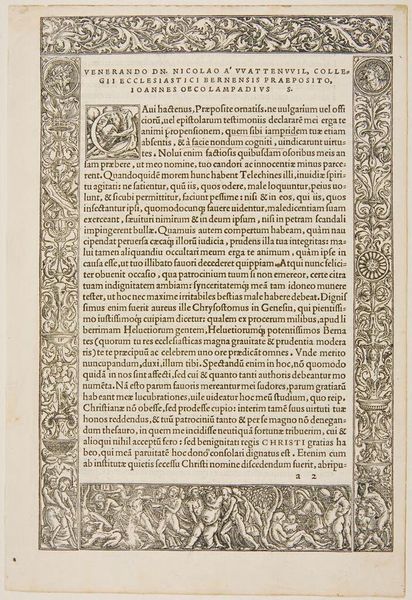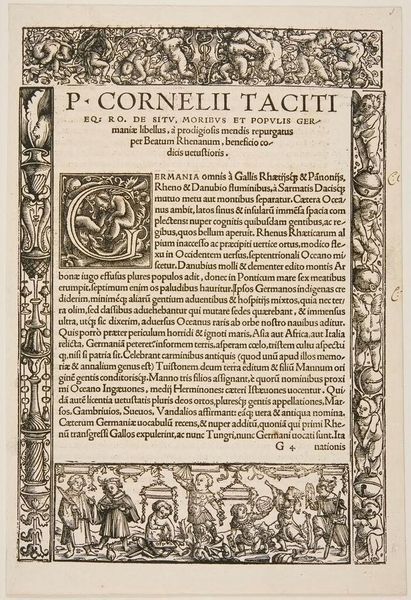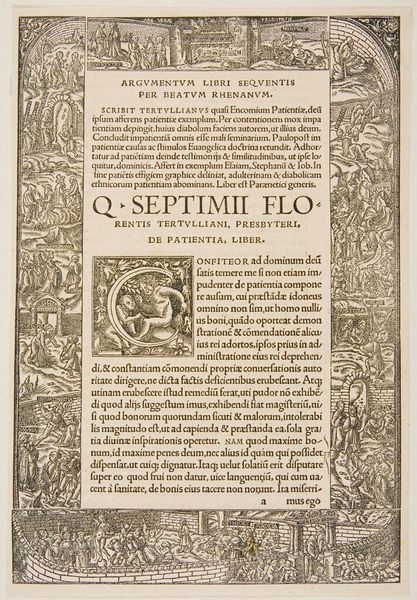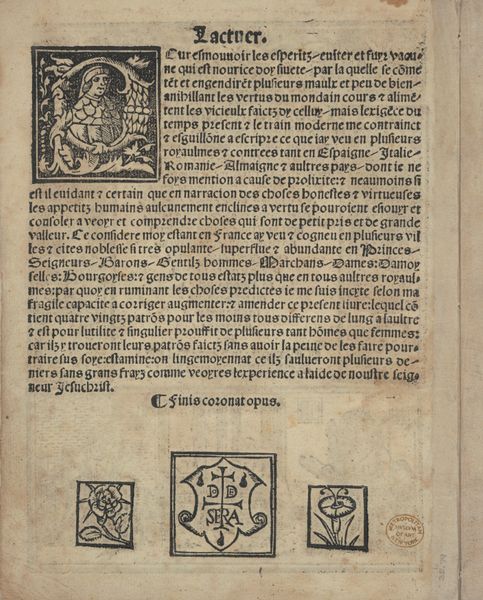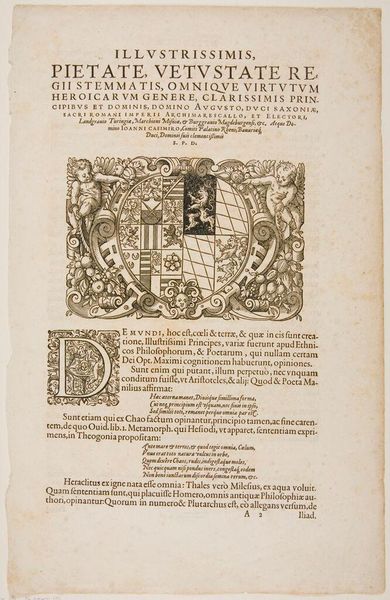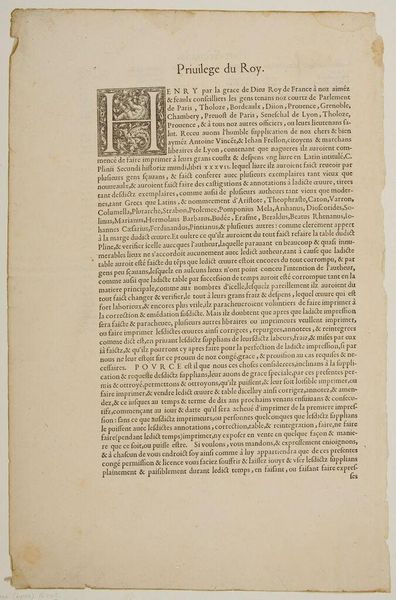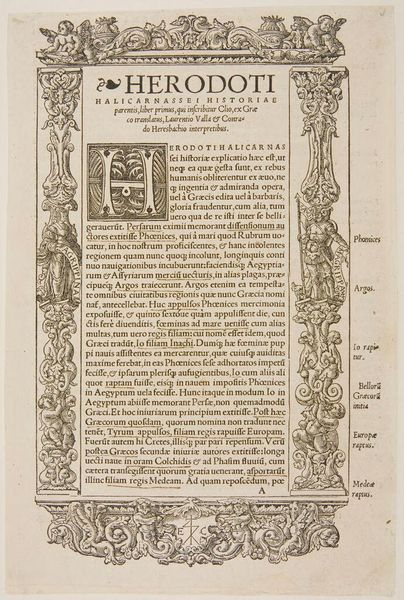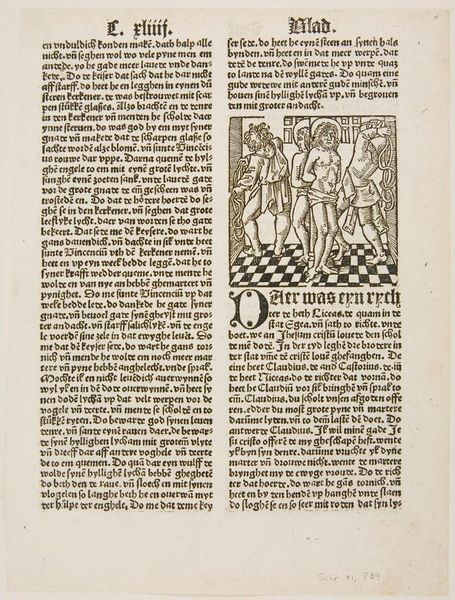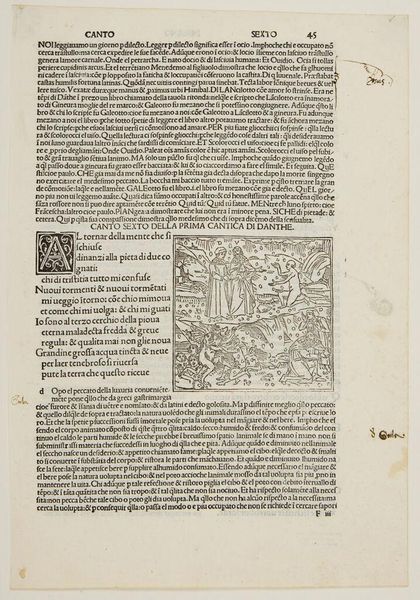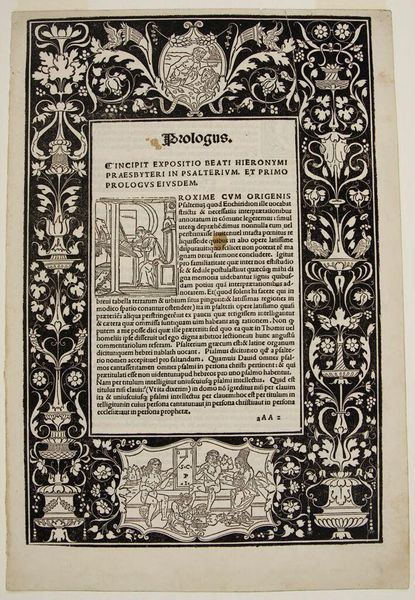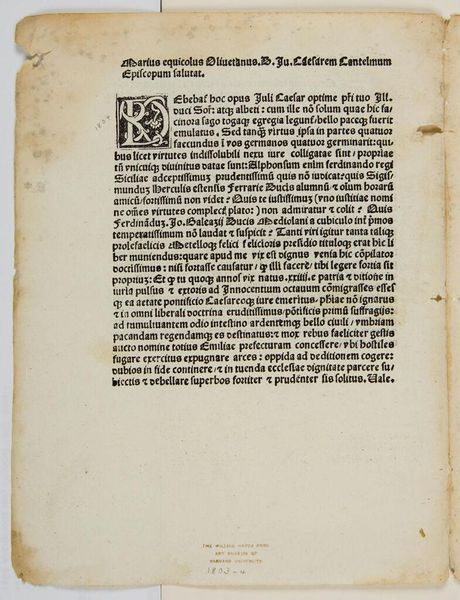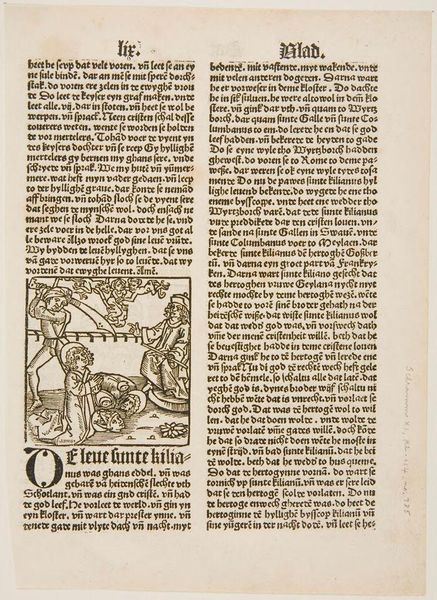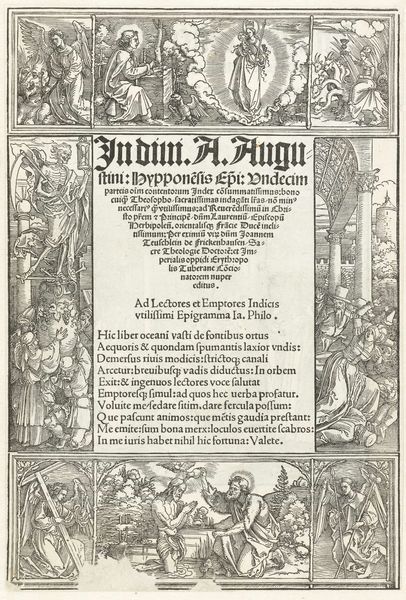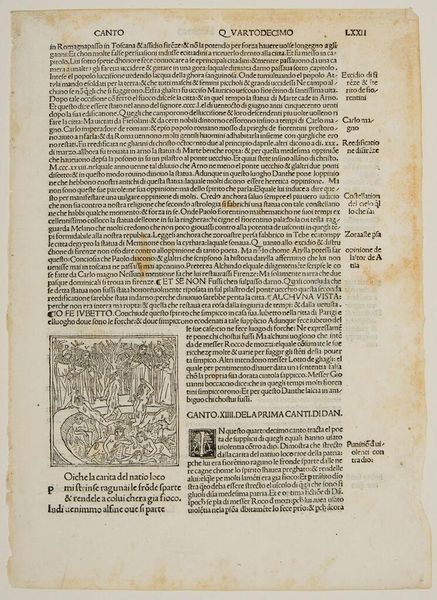
Copyright: CC0 1.0
Curator: Let’s turn our attention to this intriguing book illustration, "Genii of the Arts," by Ambrosius Holbein. It's a fascinating example of early printed imagery. Editor: Immediately, I notice the detailed border and the sense of enclosed, almost secretive activity. The materials used must have been pretty basic, but the artist creates an intricate world. Curator: Indeed. The woodcut, a relief printing technique, allowed for the relatively mass production of such images. The central scene is framed by elaborate ornamentation and classical figures. It’s all very humanistic. Editor: The labor involved is what strikes me. Each line carefully carved, each figure meticulously rendered. This wasn't a quick process; it demanded a skilled artisan. You can see the material being worked, giving it a very earthy feel. Curator: Absolutely, and the imagery, particularly the "genii" or spirits, reflects the Renaissance interest in classical mythology and the role of the arts in society. Editor: Right. But there’s something almost subversive about depicting these figures in a printed format, making art more accessible, challenging the traditional boundaries of artistic consumption. Curator: It gives us insight into the burgeoning print culture of the time and how images circulated, shaping ideas and influencing cultural values. Editor: A testament to human ingenuity and the democratizing power of making. I’m glad we took a closer look.
Comments
No comments
Be the first to comment and join the conversation on the ultimate creative platform.
